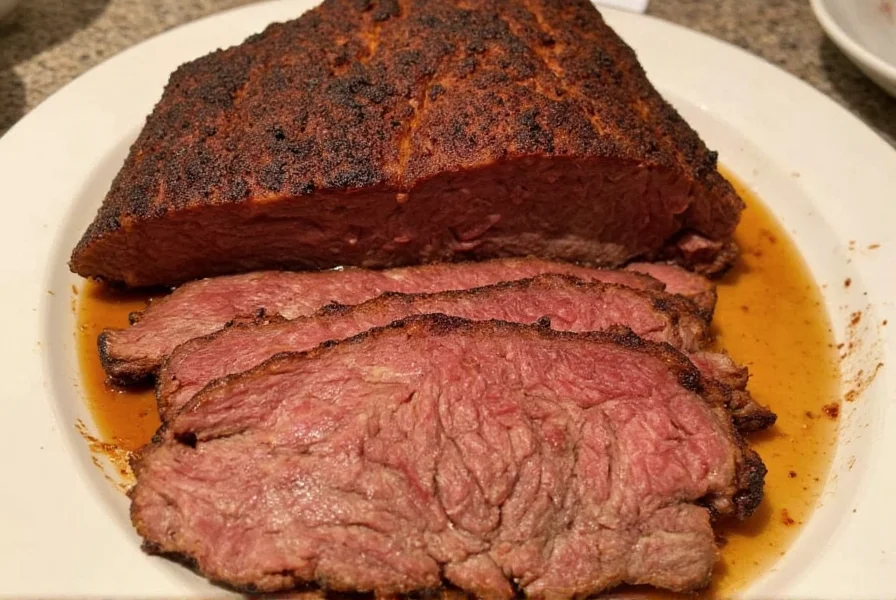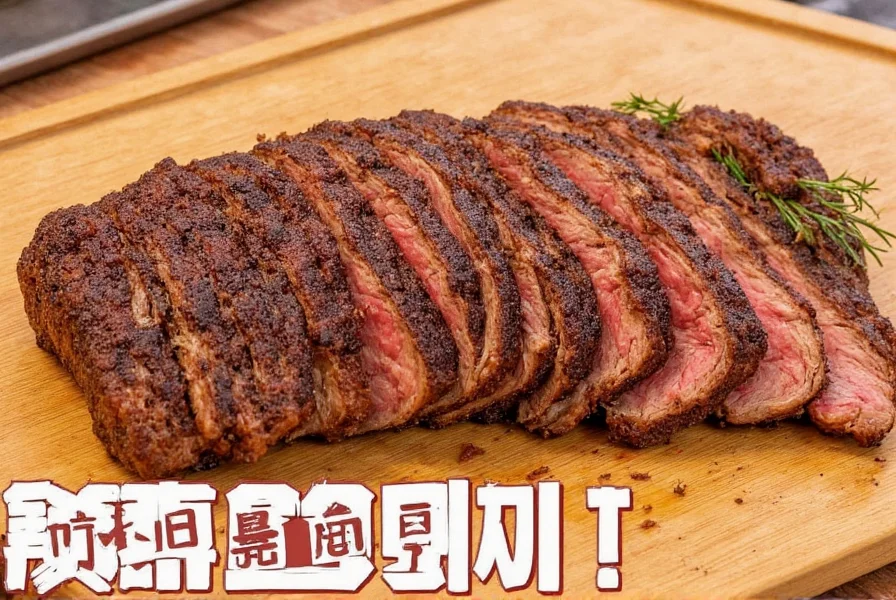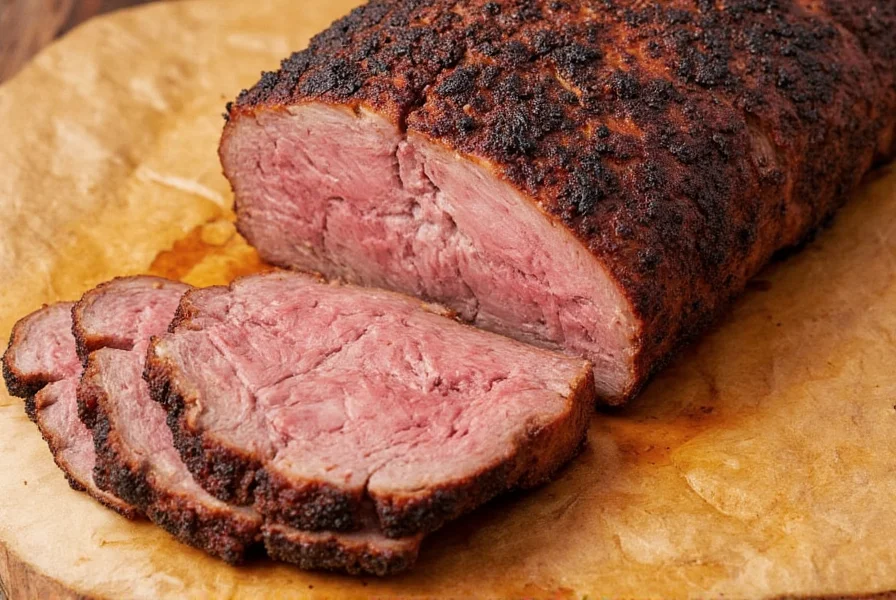Beef brisket, a flavorful but tough cut from the chest area of the cow, transforms into melt-in-your-mouth perfection when baked properly. Unlike smoking, baking provides a more accessible method for home cooks without specialized equipment while still delivering that signature rich, beefy flavor. This comprehensive guide reveals the precise techniques for achieving restaurant-quality baked brisket in your conventional oven.
Selecting the Right Brisket
Not all briskets are created equal. For baking, choose a "point cut" or "second cut" brisket (8-12 pounds) which contains more marbling than the flat cut. Look for:
- Deep red color with abundant white fat marbling
- At least 1/4 inch of fat cap on one side
- Fresh appearance without dark spots or excessive liquid in packaging
| Brisket Cut | Best For Baking? | Weight Recommendation |
|---|---|---|
| Point Cut (Second Cut) | Excellent | 8-12 lbs |
| Flat Cut (First Cut) | Fair (dries out easier) | 5-8 lbs |
| Whole Packer | Advanced | 12-16 lbs |
Essential Ingredients for Flavorful Baked Brisket
Your seasoning blend makes or breaks the final product. For authentic Texas-style baked brisket:
- 1 whole beef brisket (10-14 pounds)
- 3 tablespoons coarse black pepper
- 3 tablespoons kosher salt
- 2 tablespoons garlic powder
- 1 tablespoon onion powder
- 1 tablespoon smoked paprika
- 1 cup beef broth or stock
- 2 onions, sliced
- 4 garlic cloves, smashed

Step-by-Step Baking Process
Follow these precise steps for foolproof baked brisket every time:
Preparation (30 minutes)
- Remove brisket from refrigerator 2 hours before cooking
- Trim fat cap to 1/4 inch thickness, removing hard fat chunks
- Mix all dry rub ingredients and generously coat all sides
- Place on wire rack over baking sheet and refrigerate uncovered for 1-24 hours
Searing (15 minutes)
- Preheat oven to 450°F with rack in center position
- Place brisket fat-side down in heavy roasting pan
- Sear for 7-8 minutes until deeply browned
- Flip and sear fat-side up for additional 7-8 minutes
Slow Roasting (10-12 hours)
- Reduce oven temperature to 275°F
- Add sliced onions and garlic to pan bottom
- Pour beef broth around (not over) the brisket
- Cover tightly with double-layered heavy-duty foil
- Roast for 1 hour per pound until internal temperature reaches 200-205°F
- Check temperature in multiple locations after 8 hours

Temperature and Timing Guide
Proper temperature control separates good brisket from great brisket. Use this reference:
| Weight | Approximate Cooking Time | Target Internal Temp | Resting Time |
|---|---|---|---|
| 8-10 lbs | 8-10 hours | 200-205°F | 60 minutes |
| 10-12 lbs | 10-12 hours | 200-205°F | 75 minutes |
| 12-14 lbs | 12-14 hours | 200-205°F | 90 minutes |
Critical Mistakes That Ruin Baked Brisket
Avoid these common errors that turn potentially perfect brisket into disappointment:
- Skipping the rest period - Cutting too soon releases precious juices
- Incorrect oven temperature - Above 275°F causes toughness; below 250°F extends cooking time excessively
- Insufficient seasoning - Brisket needs generous rub to penetrate thick muscle fibers
- Cutting with the grain - Always slice perpendicular to muscle fibers for tenderness
- Using lean cuts - The flat cut often dries out during long baking process
Serving and Storage Tips
Maximize your baked brisket experience with these professional techniques:
- Slice against the grain using a sharp carving knife
- Serve with au jus made from pan drippings
- Store leftovers in broth to maintain moisture
- Reheat gently in 250°F oven with foil covering
- Freeze portions for up to 3 months in vacuum-sealed bags
Frequently Asked Questions
Can I bake brisket without searing first?
Yes, but searing creates the flavorful crust essential for authentic brisket. Skipping this step results in less complex flavor and a paler appearance. If you must skip searing, increase initial oven temperature to 325°F for the first hour to develop some browning.
Why did my baked brisket turn out dry?
Dry brisket typically results from insufficient fat content, cooking at too high temperature, or not reaching proper internal temperature (200-205°F). The point cut works better for baking than the flat cut. Ensure you maintain 275°F consistently and allow proper resting time before slicing.
How do I know when baked brisket is done?
Brisket is done when a meat thermometer inserted into the thickest part reads 200-205°F and offers no resistance when probed with a fork. The "bend test" is also reliable - when lifted with tongs, properly cooked brisket should bend significantly without breaking.
Can I bake brisket at 350°F instead of 275°F?
While possible, higher temperatures risk toughness as collagen breaks down too quickly. The 275°F temperature allows gradual conversion of tough connective tissue to gelatin. If using 350°F, reduce cooking time to 45 minutes per pound and monitor temperature closely to prevent overcooking.
What's the difference between baked and smoked brisket?
Baked brisket uses dry oven heat while smoked brisket cooks with indirect heat and wood smoke. Baking produces more consistent results for beginners and requires no special equipment. Smoked brisket develops a distinctive smoke ring and more complex flavor but requires precise temperature control and smoke management skills.











 浙公网安备
33010002000092号
浙公网安备
33010002000092号 浙B2-20120091-4
浙B2-20120091-4